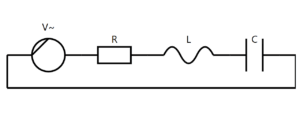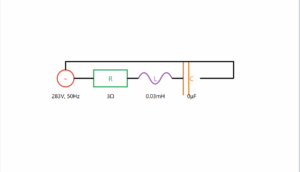Power Factor Simulation
Example 7.7: Power Factor in AC Circuits
Low power factor implies large power loss in transmission because:
To supply a given power at fixed voltage, low power factor requires higher current, leading to greater I²R losses.
Adding a capacitor can neutralize reactive current, improving power factor toward 1.
Example
Question:
(a) For circuits used for transporting electric power, a low power factor implies large power loss in transmission. Explain.
(b) Power factor can often be improved by the use of a capacitor of appropriate capacitance in the circuit. Explain.
Solution:
(a) We know \(P = IV\cos\phi\), where \(\cos\phi\) is the power factor. To supply a given power at a given voltage, if \(\cos\phi\) is small, we need to increase current. This leads to larger power loss (\(I^2 R\)) in transmission.
(b) Suppose current \(I\) lags voltage by angle \(\phi\), then power factor \(\cos\phi = R/Z\). Improving power factor (towards 1) is achieved by making \(Z\) tend to \(R\). This can be done by adding a capacitor with appropriate value in parallel, providing a leading current to cancel lagging 'wattless' current and making the effective current in phase with voltage.



